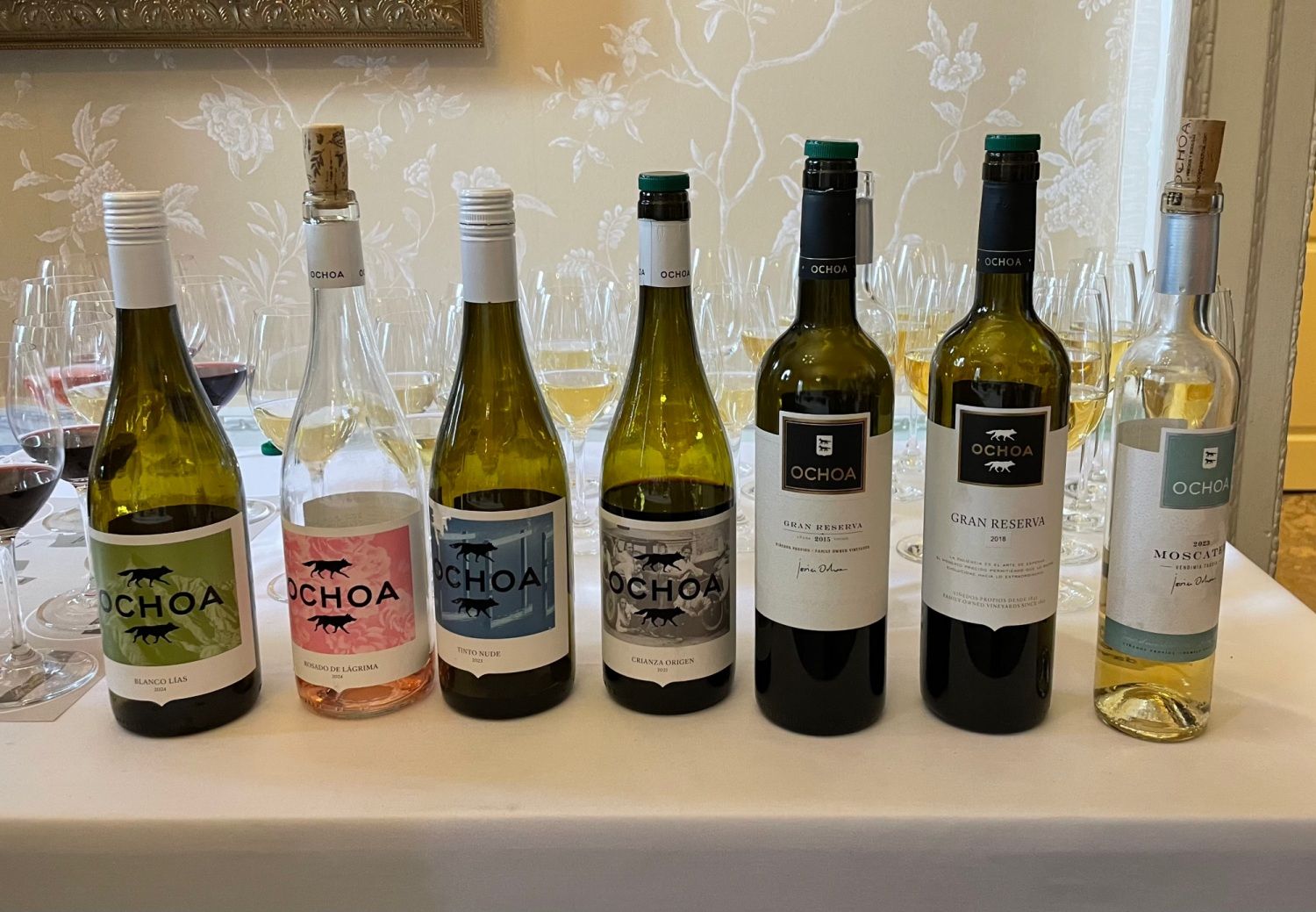“Comprehension of old vine evolution could conceivably provide the key to our industry’s future,” writes Garnett from the Old Vine Conference 2023.
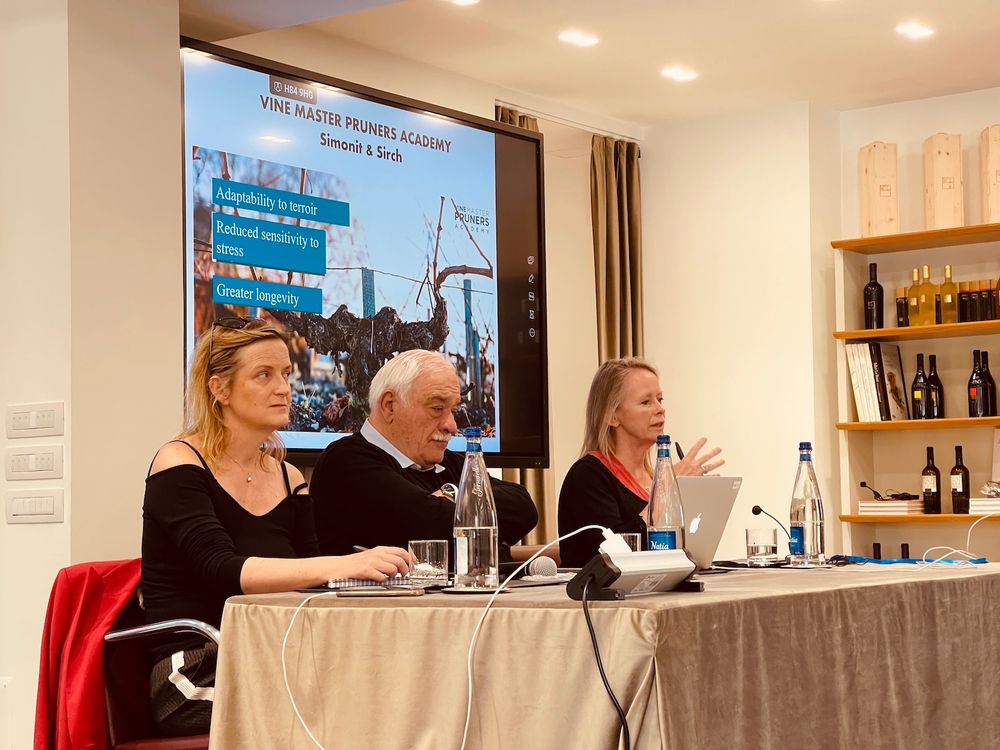
Old Vine Conference 2023: from left, Sarah Abbott MW, Professor Attilio Scienza, Cynthia Chaplin
The Old Testament goes on about Noah planting vines and getting sloshed and naked on Mount Ararat in Anatolia, the resting place of the Ark. Amazingly, DNA suggests man first domesticated wild vines pretty much in that exact spot. Man’s relationship with wine is significant because, through its passage, we can trace our earliest movements around the globe. Today, ancient Mission vines (or Pais) which are used to make Holy Communion wine still map our migratory paths through Chile, Argentina, California, Mexico and the Canaries.
Genetic material present in these ancient plants is not only socially and economically significant but extremely valuable, says Sarah Abbott MW co-founder of The Old Vine Conference. It might be they also hold the secret to surviving climate change. Yet they are at risk, undervalued because of low productivity, and seen just as an ever-diminishing natural resource.
As vines age they are advantaged by greater sap flow – healthy plant structure is a physiological gain of time served. Older vines are less susceptible to disease pressures, their deep, established roots a boon against drought, flooding, heat and frost. In these conditions they are the most productive, more so than younger plants. Older plants self-regulate, they have a biological instinct, a response to environmental factors and an ability to affect heritable change in response to the environment without altering DNA.
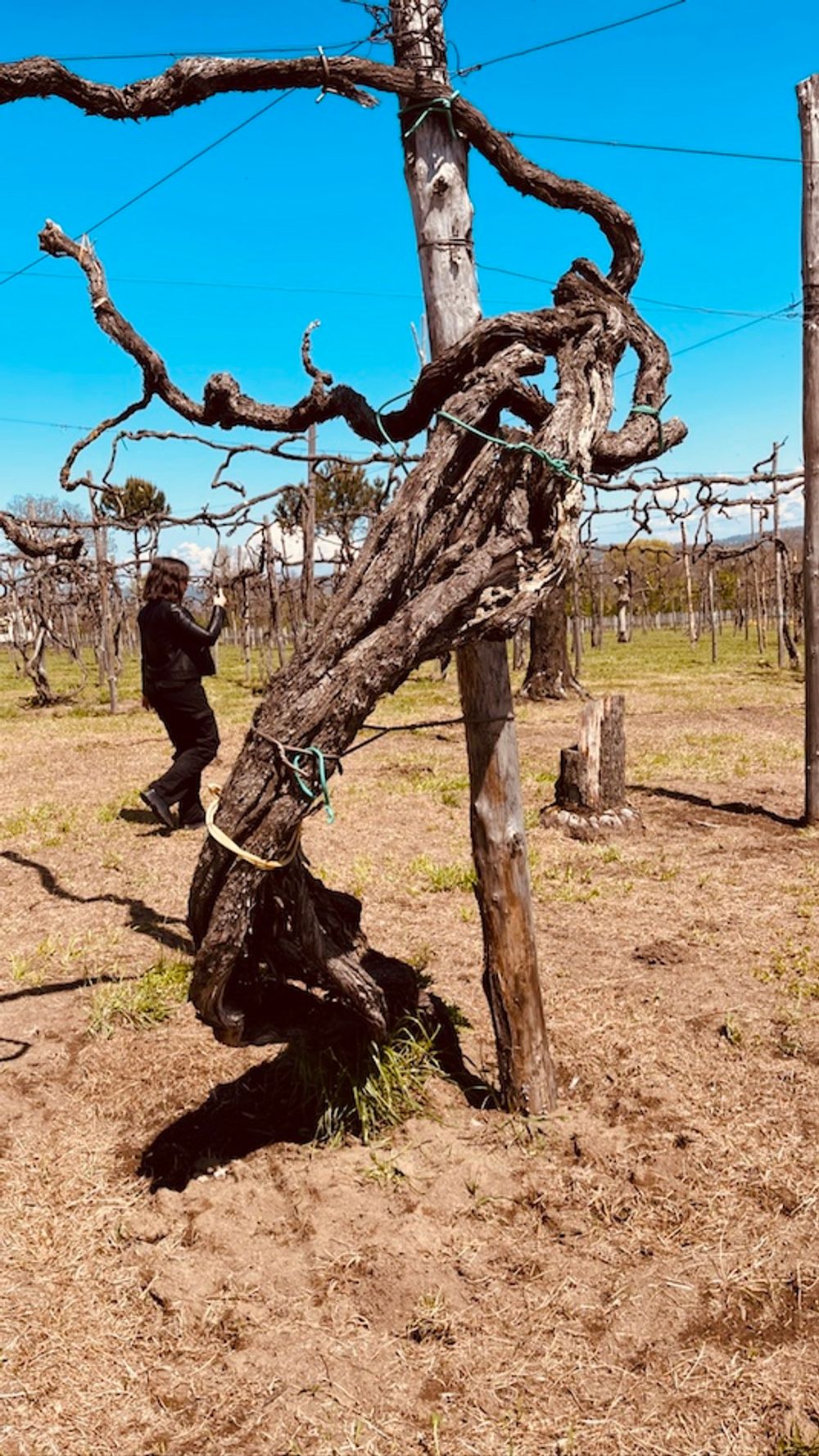
Close up of a 150 year-old vine on pergola
Visiting 150 year old vines in ‘Del Re’
This area of learning drives the Old Vine Conference, founded by Abbott, Alun Griffiths and Leo Austin. Their aim is to create a globally recognised category for old vines, their wines and to connect custodians of old vines through education and research. In the two years since it was founded The Old Vine Conference has contributed to the awareness, understanding and support of the global old vine movement through the establishment of a varied programme of activities including international field trips to wineries and vineyards like Feudi di San Gregorio, home to some of the world’s richest viticultural heritage.
Irpina-based Feudi di San Gregorio cares for 50 hectares of vines aged over 100 years old, and were our hosts for this fascinating three-day field trip to study ancient vines in Campania and Basilicata. One vineyard we saw, the ‘Del Re’, comprises vines of over 150 years old, pre-phylloxera and ungrafted. They stand 2.5 metres tall with criss-crossing shoots that reach four to five metres in length. This vineyard is responsible for the estate’s single vineyard wine, Serpico.
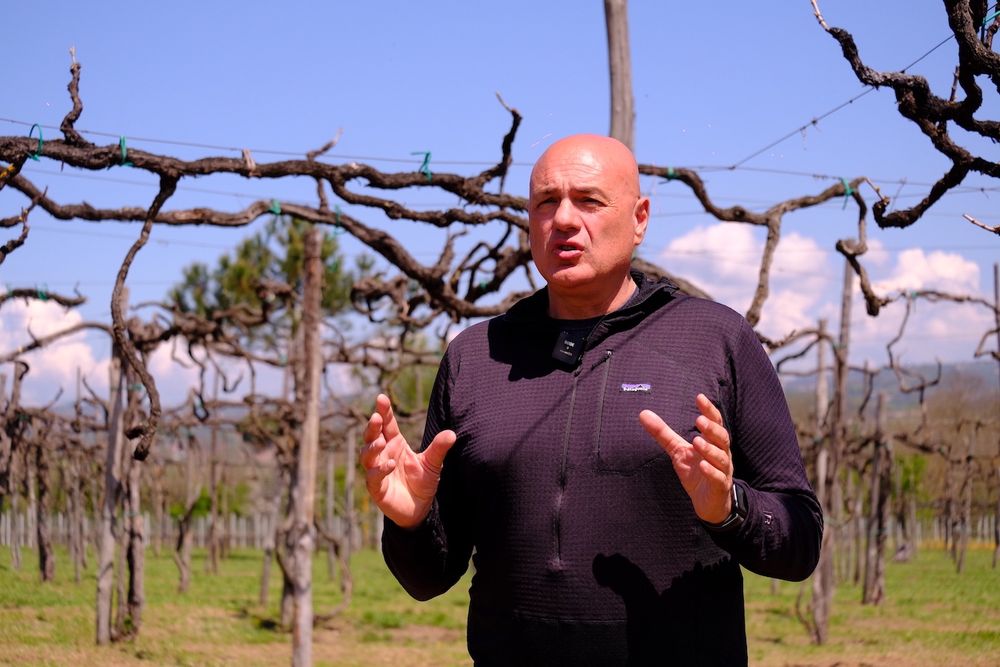
Pierpaolo Sirch in the ‘Del Re’ vineyard
Professor Attilio Scienza and Pierpaolo Sirch (Feudi di San Gregorio’s agronomist and world famous travelling vine surgeon) took us on a mind-blowing tour of these ancient vines which are a short drive from Feudi’s winery in Irpina. Vines, they explained, have the potential for extreme longevity when cared for correctly – room to expand with energy rather than vigour is key.
Commercial plants might last as little as 20 years, yet it is reasonable to expect many vines to survive for 100. Rapacious climbers must be skilfully tricked into temporary submission by skilled pruning techniques, many of which are localised and evolve over time in response to climactic factors. Trunk disease and viruses are rife because pruning is seen as menial and unskilled, says Scienza, who estimates that 10% of the world’s vines are affected.

Vivianna Malafarina, Basilisco
A field trip to Basilisco
Next we visited Basilisco, a 16th Century winery bought by Feudi in 2011. Winemaker and manager Vivianna Malafarina showed us round. A former teacher and top tier hospitality professional, her capacity for viticulture was spotted by Antonio Capaldo, the chairman of Feudi di San Gregorio, when she was still working on the Orient Express. She exhibited the sort of messianic magnetism very much in keeping with the old vine vibe.
Basilisco lies in Barile, a beautiful, impoverished hilltop town. Wild flowers grip the metre-thick precipitous winery walls and bird song surrounds the ancient edifice. It’s not ideal, a new winery would probably have made more financial sense, but it’s the oldest cantina in Barile and it’s beautiful.
Littered with underground cellars dating back 500 years, Barile lies on Mount Vulture, an extinct volcano in its own national park over 400 metres above sea level. The village was settled in the 15th century by Albanians fleeing the Ottomans, who dug deep grottoes into the hillside for shelter. Today these cool shelters are used for storing wine.
Soil is fertile and mineral-rich in these parts, vines have always been pergola-trained and Aglianico (aka ‘the Barolo of the South’) flourishes here. Basilisco cultivate 25 hectares of organically farmed vines, 24 hectares of Aglianico and 1 of Fiano.
‘Lo Storico’ is an ancient vineyard 580m above sea level where Basilico nurtures its finest fruit. The valley is constantly refreshed by sweet sea breezes that keep disease at bay – it’s very cool and the ungrafted vines ripens late. Yields are small but healthy. 80 year old vines are trained to small stakes and tied with gorse as is traditional in the locale. A profusion of wild asparagus, olives, mint, wild iris, rocket and all manner of wild herbs surround them. Cuttings from these vines are meticulously studied and used to propagate Fuedi’s other sites.
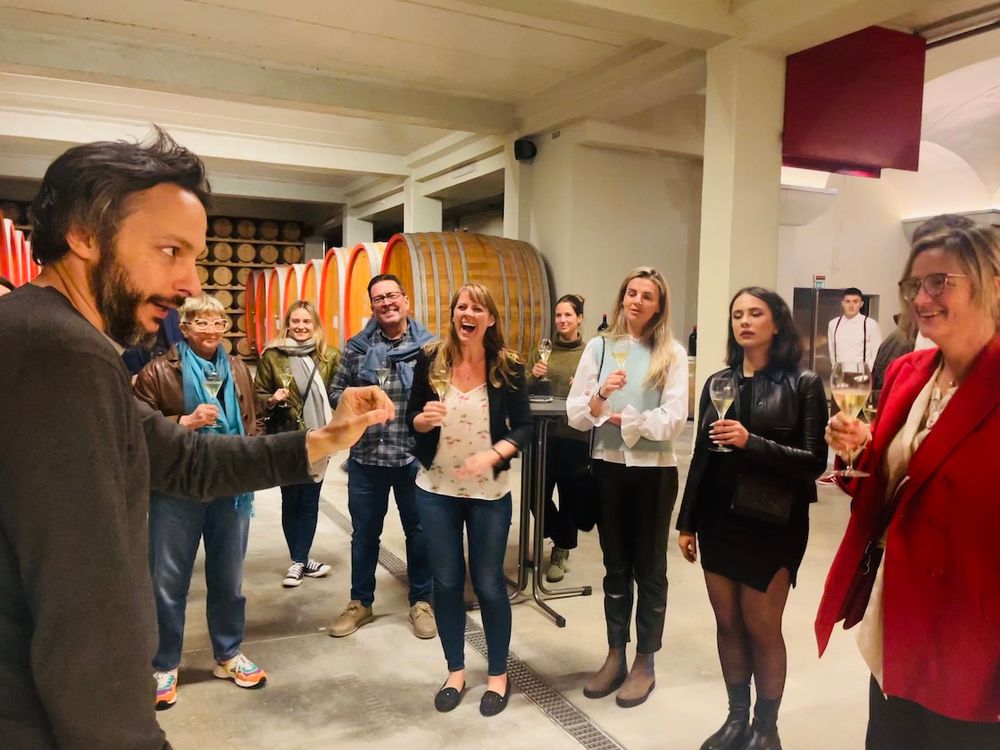
Antonio Capaldo, chairman Feudi di San Gregorio, Michèle Shah, Emilie Richomme, marketing manager, Feudi di San Gregorio, Lars J. Leicht, Janina Doyle, Anna Spooner, Georgie Fenn, Hannah Crosbie, Sarah Abbott MW
Non-homogeneity is key to the future of wine
Malafarina, Sirch, Scienza and Capaldo are passionate about their work. They see preservation as imperative, because these old vineyards offer an immense genetic database, a treasure trove of aromas. They say non-homogeneity is absolutely key to the wine of the future, and not just for Feudi.
“At Feudi di San Gregorio and Basilisco, we are incredibly lucky to have unique ungrafted vines over a century old and we believe that this heritage remains the key for our future,” says Capaldo. “We came close to losing a priceless genetic treasure, but instead it has become part of our heritage.”
Discussions on the last day of the Old Vine Conference settled on how best to express the unique qualities of old vine wines to consumers. Perhaps a simple ark motif, a universally understood friendly badge might do the trick? According to ancient texts, the ark once saved us from floods, perhaps it can do the same for old vines. We would all benefit from clear labelling, it was argued, and with different countries having hugely varying ideas of what constitutes ‘old’, vine age might prove a useful addition to the label too.
There is much to debate in terms of the taste and textural expression of old vine wines but no doubt that the world is warming. A collective understanding of this resilient vine category can but add to our armoury. It is possible early man got sloshed on fermenting grapes before mastering cogent reason. Wine has evolved with us; it is the ultimate communion of human and nature. Comprehension of old vine evolution could conceivably provide the key to our industry’s future.
So how did the ‘old vine wines’ at the Conference shape up?

Tasting the new vintage: Vivianna Malafarina, Basilisco,
We tasted many magnificent old vine wines at a tutored tasting entitled ‘Old Vines, New Category: Great Wines from Heritage Vineyards’ which was led by Sarah Abbott MW.
Vineyard Collection Carignan Gris, 2022, Domaine Jones, Vin de France, Roussillon
Age of vines: 120 yrs. A profusion of white blossom, pear, oily almond, candied crunchy lemon and stinging nettles; round and silky with a textural pithy grapefruit and a miniscule hint of yoghurt, subtly smoky on the finish. Long, stony and steely – Fresh and fine. (RRP €20.00)
Aciniell’ Roviello Bianco, 2019, Fratelli Addimanda, Taurasi, Italy
Age of vines: up to 150 yrs. Saline-laced pineapple chunks, candied lemon, vanilla. It is ripe yet minerally, sapid and fresh – there is a delicious, bitter finish and a beautiful floral nose. Availability: Italy only (approx. €18.00)
Lison Classico DOCG, 2019, Villa Bogdano, Veneto, Italy
Age of vines: 80 yrs. Certified Organic. Orange and grapefruit marmalade, pineapple chunks, white blossom, watermelon, spearmint, sage and high church incense. Round, golden and dry with a grippy, salty, marzipan finish. Savoury and sapid; superb. UK Distributor: Ultravino Ltd (RRP: £23.00)
Old Vine Pale Rosé Lot 113, 2021, Garage Wine Co., Maule Valley, Chile
Age of vines: 75+ yrs. Crunchy sour cherry, cherry blossom, pomegranate, cranberry, candied orange, Turkish Delight, Strawberry and rosehip syrup. Textural grip defines a juicy finish. Mouthwatering. Slurp (RRP £19.00)
Vigne Vecchie, 50 year Anniversary, 2020, Barbera Asti DOCG, Vinchio Vaglio, Piedmont, Italy
Age of vines: 50+ yrs. Light and vibrant with salted morello cherry, kirsch, strawberry, blackberry and a delicate savoury edge that complements the fine, chalky, tannic finish. UK Stockist: huskywines.co.uk (RRP £19.95)
Vielles Vignes Cinsault, 2019, Domaine des Tourelles, Bekaa Valley, Lebanon
Age of vines: 70 yrs. Intense waves of bitter cherry, plum and fig – the wine is firm and spicy with a delicate note of pungent woody liquorice and garrigue, culminating in chalky tannins. UK Stockists: Boutinot, Great Grog, Talking Wine (RRP £18.00)
Quinta do Crasto Reserva Old Vines, 2020, Douro DOC, Portugal
Age of vines: average 70 yrs. Dry, dense, lively and textural; moreishly bitter and deep. High church incense denotes richness, violets and red fruit, freshness. A tease of delicate black olive and judicious use of oak suggests ageing potential and more excitement to come. UK Distributor: Enotria&Coe (RRP £34.00)
Pagani Ranch Zinfandel, 2021, Ridge Vineyards, Sonoma Valley, USA
Age of vines: up to 120 yrs. Supple, chewy, fresh and chalky. Blackcurrant, almonds and roses, sour morello cherry, strawberries, almonds, black pepper and a bats squeak of blood. Long, layered and lively. UK Distributor: Berkmann Wine Cellars (RRP: £56.00)
Catena Zapata Malbec Argentino, 2020, Mendoza, Argentina
Age of vines: upto 90 yrs. Famously made with grapes from two high altitude vineyards (920 m and 1095 m above sea level). Tempered, focused, elegant and rich with aromas of violet, plum, dried roses, bitter peppered chocolate and Upmann No.2. Long, fresh and savoury with a moreish, earthy tannic finish. UK Stockists: Bibendum, Hedonism, Vinvm, Harvey Nichols (RRP £70-90.00)
Basilisco Storico, Aglianico del Vulture Superiore DOCG, 2013, Campania, Italy
Vine age: 80 yrs. Understated and powerful; deep, dark, inky and textural. There is a delicate saline edge to the plum fruit and a delicious, moreish bitterness. It is smoky and perfumed, the tannins are dry and they multiply deliciously on the finish. Availability: Italy only (RRP: approx. £50.00)
Serpico, Feudi di San Gregorio, 2015, Irpinia DOC, Campania, Italy
Age of vines: 100+ yrs (ungrafted). Savoury soy, cherry, tomato leaf, bloody game and iodine. A dusting of sweet cinnamon, cocoa and coffee adds complexity to this layered, age-worthy wine. UK Stockist: Hallgarten (RRP £45.00)
So in conclusion…
Man made wine before learning to write. Old vines map our path to the new world and our genesis in the old. Prized for complexity, flavour and their marked tendency to express terroir they offer up a stimulating smörgåsbord of taste and nostalgia: a living link with summers past.




